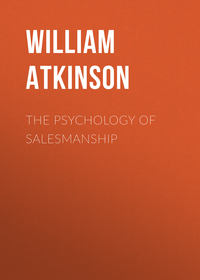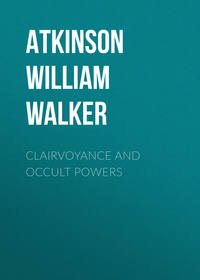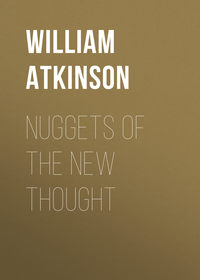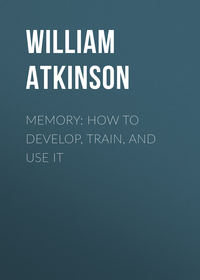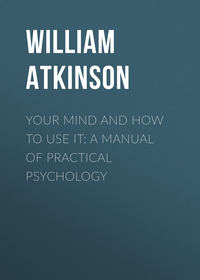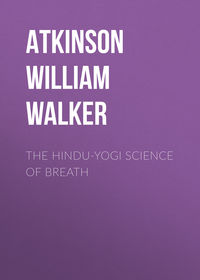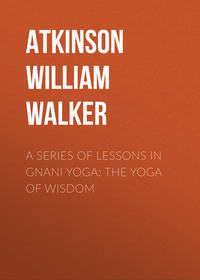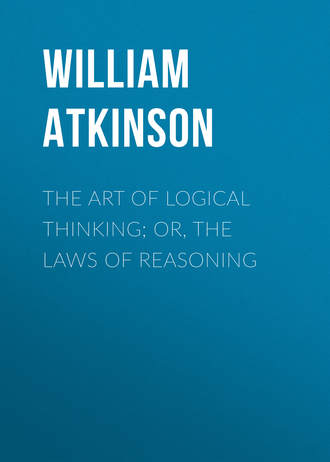 полная версия
полная версияThe Art of Logical Thinking; Or, The Laws of Reasoning
There are three kinds of Conversion; viz: (1) Simple Conversion; (2) Conversion by Limitation; (3) Conversion by Contraposition.
In Simple Conversion there is no change in either quality or quantity. In Conversion by Limitation the quality is changed from universal to particular. In Conversion by Negation the quality is changed but not the quantity. Referring to the classification tables and symbols given in the preceding pages of this chapter, we may now proceed to consider the application of these methods of Conversion to each of the four kinds of propositions; as follows:
The Universal Affirmative (symbol A) proposition is converted by Limitation, or by a change of quality from universal to particular. The predicate not being "distributed" in the convertend, we must not distribute it in the converse by saying "all." Thus in this case we must convert the proposition, "all men are mortal" (A), into "some mortals are men" (I).
The Universal Negative (symbol E) is converted by Simple Conversion, in which there is no change in either quality or quantity. For since both terms of "E" are distributed, they may both be distributed in the converse without violating the law of conversion. Thus "No man is mortal" is converted into: "No mortals are men." "E" is converted into "E."
The Particular Affirmative (symbol I) is also converted by Simple Conversion in which there is no change in either quality or quantity. For since neither term is distributed in "I," neither term may be distributed in the converse, and the latter must remain "I." For instance; the proposition: "Some men are mortal" is converted into the proposition, "Some mortals are men."
The Particular Negative (symbol O) is converted by Conversion by Negation, in which the quality is changed but not the quantity. Thus in converting the proposition: "Some men are not mortal," we must not say "some mortals are not men," for in so doing we would distribute men in the predicate, where it is not distributed in the convertend. Avoiding this, we transfer the negative particle from the copula to the predicate so that the convertend becomes "I" which is converted by Simple Conversion. Thus we transfer "Some men are not mortal" into "Some men are not-mortal" from which we easily convert (by simple Conversion) the proposition: "Some not-mortals are men."
It will be well for students, at this point, to consider the three following Fundamental Laws of Thought as laid down by the authorities, which are as follows:
The Law of Identity, which states that: "The same quality or thing is always the same quality or thing, no matter how different the conditions in which it occurs."
The Law of Contradiction, which states that: "No thing can at the same time and place both be and not be."
The Law of Excluded Middle, which states that: "Everything must either be or not be; there is no other alternative or middle course."
Of these laws, Prof. Jevons, a noted authority, says: "Students are seldom able to see at first their full meaning and importance. All arguments may be explained when these self-evident laws are granted; and it is not too much to say that the whole of logic will be plain to those who will constantly use these laws as the key."
CHAPTER XI.
INDUCTIVE REASONING
Inductive Reasoning, as we have said, is the process of discovering general truth from particular truths, or inferring general laws from particular facts. Thus, from the experience of the individual and the race regarding the particular truth that each and every man under observation has been observed to die sooner or later, it is inferred that all men die, and hence, the induction of the general truth that "All men must die." Or, as from experience we know that the various kinds of metals expand when subjected to heat, we infer that all metals are subject to this law, and that consequently we may arrive by inductive reasoning at the conclusion that: "All metals expand when subjected to heat." It will be noticed that the conclusion arrived at in this way by Inductive Reasoning forms the fundamental premise in the process of Deductive Reasoning. As we have seen elsewhere, the two processes, Inductive and Deductive Reasoning, respectively are interdependent – resting upon one another.
Jevons says of Inductive Reasoning: "In Deductive Reasoning we inquire how we may gather the truth contained in some propositions called Premises, and put into another proposition called the Conclusion. We have not yet undertaken to find out how we can learn what propositions really are true, but only what propositions are true when other ones are true. All the acts of reasoning yet considered would be called deductive because we deduce, or lead down the truth from premises to conclusion. It is an exceedingly important thing to understand deductive inference correctly, but it might seem to be still more important to understand inductive inference, by which we gather the truth of general propositions from facts observed as happening in the world around us." Halleck says: "Man has to find out through his own experience, or that of others, the major premises from which he argues or draws his conclusions. By induction we examine what seems to us a sufficient number of individual cases. We then conclude that the rest of these cases, which we have not examined, will obey the same general law… Only after general laws have been laid down, after objects have been classified, after major premises have been formed, can deduction be employed."
Strange as may now appear, it is a fact that until a comparatively recent period in the history of man, it was held by philosophers that the only way to arrive at all knowledge was by means of Deductive Reasoning, by the use of the Syllogism. The influence of Aristotle was great and men preferred to pursue artificial and complicated methods of Deductive Reasoning, rather than to reach the truth by obtaining the facts from Nature herself, at first hand, and then inferring general principle from the facts so gathered. The rise of modern scientific methods of reasoning, along the lines of Inductive Inference, dates from about 1225-1300. Roger Bacon was one of the first to teach that we must arrive at scientific truth by a process of observation and experimentation on the natural objects to be found on all sides. He made many discoveries by following this process. He was ably seconded by Galileo who lived some three hundred years later, and who also taught that many great general truths might be gained by careful observation and intelligent inference. Lord Francis Bacon, who lived about the same time as Galileo, presented in his Novum Organum many excellent observations and facts regarding the process of Inductive Reasoning and scientific thought. As Jevons says: "Inductive logic inquires by what manner of reasoning we can gather the laws of nature from the facts and events observed. Such reasoning is called induction, or inductive inquiry, and, as it has actually been practiced by all the great discoverers in science, it consists in four steps."
The Four Steps in Inductive Reasoning, as stated by Jevons, are as follows:
First Step.– Preliminary observation.
Second Step.– The making of hypotheses.
Third Step.– Deductive reasoning.
Fourth Step.– Verification.
It will be seen that the process of Inductive Reasoning is essentially a synthetic process, because it operates in the direction of combining and uniting particular facts or truths into general truths or laws which comprehend, embrace and include them all. As Brooks says: "The particular facts are united by the mind into the general law; the general law embraces the particular facts and binds them together into a unity of principle and thought. Induction is thus a process of thought from the parts to the whole – a synthetic process." It will also be seen that the process of Inductive Reasoning is essentially an ascending process, because it ascends from particular facts to general laws; particular truths to universal truths; from the lower to the higher, the narrower to the broader, the smaller to the greater.
Brooks says of Inductive Reasoning: "The relation of induction to deduction will be clearly seen. Induction and Deduction are the converse, the opposites of each other. Deduction derives a particular truth from a general truth; Induction derives a general truth from particular truths. This antithesis appears in every particular. Deduction goes from generals to particulars; Induction goes from particulars to generals. Deduction is an analytic process; Induction is a synthetic process. Deduction is a descending process – it goes from the higher truth to the lower truth; Induction is an ascending process – it goes from the lower truth to the higher. They differ also in that Deduction may be applied to necessary truths, while Induction is mainly restricted to contingent truths." Hyslop says: "There have been several ways of defining this process. It has been usual to contrast it with Deduction. Now, deduction is often said to be reasoning from general to particular truths, from the containing to the contained truth, or from cause to effect. Induction, therefore, by contrast is defined as reasoning from the particular to the general, from the contained to the containing, or from effect to cause. Sometimes induction is said to be reasoning from the known to the unknown. This would make deduction, by contrast, reasoning from the unknown to the known, which is absurd. The former ways of representing it are much the better. But there is still a better way of comparing them. Deduction is reasoning in which the conclusion is contained in the premises. This is a ground for its certitude and we commit a fallacy whenever we go beyond the premises as shown by the laws of the distribution of terms. In contrast with this, then, we may call inductive reasoning the process by which we go beyond the premises in the conclusion… The process here is to start from given facts and to infer some other probable facts more general or connected with them. In this we see the process of going beyond the premises. There are, of course, certain conditions which regulate the legitimacy of the procedure, just as there are conditions determining deduction. They are that the conclusion shall represent the same general kind as the premises, with a possibility of accidental differences. But it goes beyond the premises in so far as known facts are concerned."
The following example may give you a clearer idea of the processes of Inductive Reasoning:
First Step. Preliminary Observation. Example: We notice that all the particular magnets which have come under our observation attract iron. Our mental record of the phenomena may be stated as: "A, B, C, D, E, F, G, etc., and also X, Y, and Z, all of which are magnets, in all observed instances, and at all observed times, attract iron."
Second Step. The Making of Hypotheses. Example: Upon the basis of the observations and experiments, as above stated, and applying the axiom of Inductive Reasoning, that: "What is true of the many, is true of the whole," we feel justified in forming a hypothesis or inference of a general law or truth, applying the facts of the particulars to the general, whole or universal, thus: "All magnets attract iron."
Third Step. Deductive Reasoning. Example: Picking up a magnet regarding which we have had no experience and upon which we have made no experiments, we reason by the syllogism, as follows: (1) All magnets attract iron; (2) This thing is a magnet; therefore (3) This thing will attract iron. In this we apply the axiom of Deductive Reasoning: "Whatever is true of the whole is true of the parts."
Fourth Step. Verification. Example: We then proceed to test the hypothesis upon the particular magnet, so as to ascertain whether or not it agrees with the particular facts. If the magnet does not attract iron we know that either our hypothesis is wrong and that some magnets do not attract iron; or else that our judgment regarding that particular "thing" being a magnet is at fault and that it is not a magnet. In either case, further examination, observation and experiment is necessary. In case the particular magnet does attract iron, we feel that we have verified our hypothesis and our judgment.
CHAPTER XII.
REASONING BY INDUCTION
The term "Induction," in its logical usage, is defined as follows: "(a) The process of investigating and collecting facts; and (b) the deducing of an inference from these facts; also (c) sometimes loosely used in the sense of an inference from observed facts." Mill says: "Induction, then, is that operation of the mind, by which we infer that what we know to be true in a particular case or cases, will be true in all cases which resemble the former in certain assignable respects. In other words, Induction is the process by which we conclude that what is true of certain individuals of a class, is true of the whole class, or that what is true at certain times will be true in similar circumstances at all times."
The Basis of Induction is the axiom that: "What is true of the many is true of the whole." Esser, a well known authority, states this axiom in rather more complicated form, as follows: "That which belongs or does not belong to many things of the same kind, belongs or does not belong to all things of the same kind."
This basic axiom of Induction rests upon the conviction that Nature's laws and manifestations are regular, orderly and uniform. If we assume that Nature does not manifest these qualities, then the axiom must fall, and all inductive reason must be fallacious. As Brooks well says: "Induction has been compared to a ladder upon which we ascend from facts to laws. This ladder cannot stand unless it has something to rest upon; and this something is our faith in the constancy of Nature's laws." Some authorities have held that this perception of the uniformity of Nature's laws is in the nature of an intuitive truth, or an inherent law of our intelligence. Others hold that it is in itself an inductive truth, arrived at by experience and observation at a very early age. We are held to have noticed the uniformity in natural phenomena, and almost instinctively infer that this uniformity is continuous and universal.
The authorities assume the existence of two kinds of Induction, namely: (1) Perfect Induction; and (2) Imperfect Induction. Other, but similar, terms are employed by different authorities to designate these two classes.
Perfect Induction necessitates a knowledge of all the particulars forming a class; that is, all the individual objects, persons, things or facts comprising a class must be known and enumerated in this form of Induction. For instance, if we knew positively all of Brown's children, and that their names were John, Peter, Mark, Luke, Charles, William, Mary and Susan, respectively; and that each and every one of them were freckled and had red hair; then, in that case, instead of simply generalizing and stating that: "John, Peter, Mark, Luke, Charles, William, Mary and Susan, who are all of Brown's children, are freckled and have red hair," we would save words, and state the inductive conclusion: "All Brown's children are freckled and have red hair." It will be noticed that in this case we include in the process only what is stated in the premise itself, and we do not extend our inductive process beyond the actual data upon which it is based. This form of Induction is sometimes called "Logical Induction," because the inference is a logical necessity, without the possibility of error or exception. By some authorities it is held not to be Induction at all, in the strict sense, but little more than a simplified form of enumeration. In actual practice it is seldom available, for it is almost impossible for us to know all the particulars in inferring a general law or truth. In view of this difficulty, we fall back upon the more practical form of induction known as:
Imperfect Induction, or as it is sometimes called "Practical Induction," by which is meant the inductive process of reasoning in which we assume that the particulars or facts actually known to us correctly represent those which are not actually known, and hence the whole class to which they belong. In this process it will be seen that the conclusion extends beyond the data upon which it is based. In this form of Induction we must actually employ the principle of the axiom: "What is true of the many is true of the whole" – that is, must assume it to be a fact, not because we know it by actual experience, but because we infer it from the axiom which also agrees with past experience. The conclusion arrived at may not always be true in its fullest sense, as in the case of the conclusion of Perfect Induction, but is the result of an inference based upon a principle which gives us a reasonable right to assume its truth in absence of better knowledge.
In considering the actual steps in the process of Inductive Reasoning we can do no better than to follow the classification of Jevons, mentioned in the preceding chapter, the same being simple and readily comprehended, and therefore preferable in this case to the more technical classification favored by some other authorities. Let us now consider these four steps.
First Step. Preliminary observation. It follows that without the experience of oneself or of others in the direction of observing and remembering particular facts, objects, persons and things, we cannot hope to acquire the preliminary facts for the generalization and inductive inference necessary in Inductive Reasoning. It is necessary for us to form a variety of clear Concepts or ideas of facts, objects, persons and things, before we may hope to generalize from these particulars. In the chapters of this book devoted to the consideration of Concepts, we may see the fundamental importance of the formation and acquirement of correct Concepts. Concepts are the fundamental material for correct reasoning. In order to produce a perfect finished product, we must have perfect materials, and a sufficient quantity of them. The greater the knowledge one possesses of the facts and objects of the outside world, the better able is he to reason therefrom. Concepts are the raw material which must feed the machinery of reasoning, and from which the final product of perfected thought is produced. As Halleck says: "There must first be a presentation of materials. Suppose that we wish to form the concept fruit. We must first perceive the different kinds of fruit – cherry, pear, quince, plum, currant, apple, fig, orange, etc. Before we can take the next step, we must be able to form distinct and accurate images of the various kinds of fruit. If the concept is to be absolutely accurate, not one kind of fruit must be overlooked. Practically this is impossible; but many kinds should be examined. Where perception is inaccurate and stinted, the products of thought cannot be trustworthy. No building is firm if reared on insecure foundations."
In the process of Preliminary Observation, we find that there are two ways of obtaining a knowledge of the facts and things around us. These two ways are as follows:
I. By Simple Observation, or the perception of the happenings which are manifested without our interference. In this way we perceive the motion of the tides; the movement of the planets; the phenomena of the weather; the passing of animals, etc.
II. By the Observation of Experiment, or the perception of happenings in which we interfere with things and then observe the result. An experiment is: "A trial, proof, or test of anything; an act, operation, or process designed to discover some unknown truth, principle or effect, or to test some received or reputed truth or principle." Hobbes says: "To have had many experiments is what we call experience." Jevons says: "Experimentation is observation with something more; namely, regulation of the things whose behavior is to be observed. The advantages of experiment over mere observation are of two kinds. In the first place, we shall generally know much more certainly and accurately with what we are dealing, when we make experiments than when we simply observe natural events… It is a further advantage of artificial experiments, that they enable us to discover entirely new substances and to learn their properties… It would be a mistake to suppose that the making of an experiment is inductive reasoning, and gives us without further trouble the laws of nature. Experiments only give us the facts upon which we may afterward reason… Experiments then merely give facts, and it is only by careful reasoning that we can learn when the same facts will be observed again. The general rule is that the same causes will produce the same effects. Whatever happens in one case will happen in all like cases, provided that they are really like, and not merely apparently so… When we have by repeated experiments tried the effect which all the surrounding things might have on the result, we can then reason with much confidence as to similar results in similar circumstances… In order that we may, from our observations and experiments, learn the law of nature and become able to foresee the future, we must perform the process of generalization. To generalize is to draw a general law from particular cases, and to infer that what we see to be true of a few things is true of the whole genus or class to which these things belong. It requires much judgment and skill to generalize correctly, because everything depends upon the number and character of the instances about which we reason."
Having seen that the first step in Inductive Reasoning is Preliminary Observation, let us now consider the next steps in which we may see what we do with the facts and ideas which we have acquired by this Observation and Experiment.
CHAPTER XIII.
THEORY AND HYPOTHESES
Following Jevons' classification, we find that the Second Step in Inductive Reasoning is that called "The Making of Hypotheses."
A Hypothesis is: "A supposition, proposition or principle assumed or taken for granted in order to draw a conclusion or inference in proof of the point or question; a proposition assumed or taken for granted, though not proved, for the purpose of deducing proof of a point in question." It will be seen that a Hypothesis is merely held to be possibly or probably true, and not certainly true; it is in the nature of a working assumption, whose truth must be tested by observed facts. The assumption may apply either to the cause of things, or to the laws which govern things. Akin to a hypothesis, and by many people confused in meaning with the latter, is what is called a Theory.
A Theory is: "A verified hypothesis; a hypothesis which has been established as, apparently, the true one." An authority says "Theory is a stronger word than hypothesis. A theory is founded on principles which have been established on independent evidence. A hypothesis merely assumes the operation of a cause which would account for the phenomena, but has not evidence that such cause was actually at work. Metaphysically, a theory is nothing but a hypothesis supported by a large amount of probable evidence." Brooks says: "When a hypothesis is shown to explain all the facts that are known, these facts being varied and extensive, it is said to be verified, and becomes a theory. Thus we have the theory of universal gravitation, the Copernican theory of the solar system, the undulatory theory of light, etc., all of which were originally mere hypotheses. This is the manner in which the term is usually employed in the inductive philosophy; though it must be admitted that it is not always used in this strict sense. Discarded hypotheses are often referred to as theories; and that which is actually a theory is sometimes called a hypothesis."




